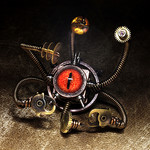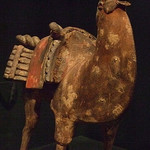1. In this miniature sculpture, the artist uses amber, which is the fossilized, hardened r
JXUwMDNkJXUwMDE2JXUwMDFhJXUwMDA3
of the pine tree and one of the few gemstones of organic origin.

Photo published by Catherinette Rings Steampunk on Flickr under a CC BY-NC-SA 2.0 license.
2. Iron, copper and silver are m
JXUwMDNkJXUwMDExJXUwMDE1JXUwMDBkJXUwMDFm
, i.e. solid materials which are typically hard, shiny, malleable, fusible and ductile, with good electrical and thermal conductivity.
Source: WordReference.
3. This camel is made of e
JXUwMDM5JXUwMDEzJXUwMDA2JXUwMDFjJXUwMDBkJXUwMDBiJXUwMDE5JXUwMDE2JXUwMDEzJXUw
MDE3
, i.e. pottery made of fired clay.

Image published on Flickr by mharrsch under a CC BY-NC-SA 2.0 license.
4. Inspired by the Cholla cacti, the interesting life-size textile sculpture shown below is made entirely from recycled women's clothing, all hand stitched, airbrushed and sealed with a UV protectant. The three main branches are formed on a mesh armature, then covered in f
JXUwMDM5JXUwMDAzJXUwMDEwJXUwMDFiJXUwMDBh
(Spanish “tela”).

Photo published on Flickr by Wendy Moyer under a CC BY-NC-ND 2.0 license.